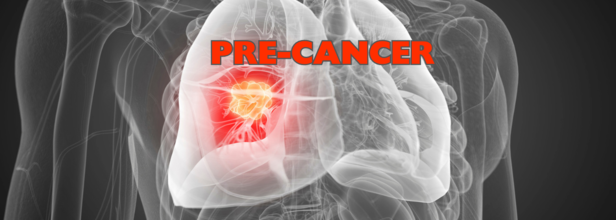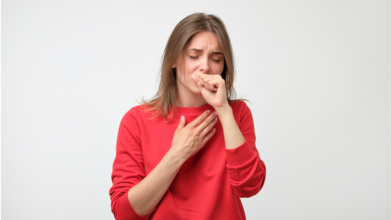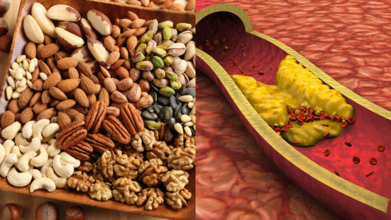- Health Conditions A-Z
- Health & Wellness
- Nutrition
- Fitness
- Health News
- Ayurveda
- Videos
- Medicine A-Z
- Parenting
- Web Stories
Does Pre-Cancer Mean I’m At Risk Of Cancer? Subtle Signs, Risks And What To Do Next

Does pre-cancer mean I’m going to get cancer? (Credit: Canva)
Cancer is a multifaceted disease that often originates from precancerous cells—abnormal cells that, if left untreated, may develop into cancer. However, not all precancerous cells turn into cancer, and understanding their nature can provide a clearer picture of how to manage and prevent potential malignancies.
Precancerous cells are abnormal cells that differ from normal cells in terms of size, shape, and growth behavior. These abnormalities make them more likely to become cancerous, though not all of them do. In fact, many precancerous cells remain stable or even revert to their normal state without ever leading to cancer. These cells are typically classified based on their degree of abnormality, ranging from mild to severe dysplasia.
Precancerous cells can develop in almost any part of the body, including the skin, breasts, colon, and cervix. Unlike cancer cells, precancerous cells do not invade nearby tissues or metastasize (spread to distant organs). However, they still need to be closely monitored to prevent progression into cancer. In some cases, healthcare providers may recommend removing the affected tissues as a precautionary measure, especially in high-risk situations.
Causes of Precancerous Cells
There are various causes of precancerous cells, which depend largely on the type of tissue involved. Several risk factors can contribute to the abnormal growth of cells, including:
Certain infections, like those caused by viruses, bacteria, and parasites, are known to trigger precancerous changes in the body. One of the most well-known examples is the human papillomavirus (HPV), which can lead to abnormal cell growth in areas such as the cervix, throat, and genital regions. Chronic infections, such as those caused by Helicobacter pylori, can lead to inflammation of the stomach lining and may increase the risk of stomach cancer.
Persistent inflammation is another factor that can lead to precancerous changes in tissues. Conditions such as gastroesophageal reflux disease (GERD) and inflammatory bowel disease (IBD) are linked to higher risks of cancers like esophageal and colon cancer. Long-term irritation in these areas creates a favorable environment for abnormal cell growth.
Carcinogens, or substances that cause cancer, can contribute to the formation of precancerous cells. These include chemicals like asbestos, arsenic, and benzene, which are commonly found in industrial settings. Other environmental carcinogens, such as tobacco smoke and UV radiation, also play a role in the development of abnormal cells in the body.
When Do Cells Become Cancerous?
The transition from precancerous cells to cancerous ones depends on the degree of cellular abnormality. These changes are graded based on how much the cells deviate from their normal appearance and function. The higher the grade of dysplasia, the more likely it is that the cells will progress to cancer.
However, there is no clear way to predict if or when a precancerous cell will become cancerous. The transformation often depends on a variety of factors, such as genetic predisposition, lifestyle choices, and environmental exposures.
Subtle Signs That Could Indicate Future Cancer Risk
While cancer is often associated with aging, there are subtle signs the body may give in youth that could indicate a higher risk of developing cancer later in life. Recognizing these early warning signs can lead to proactive measures and reduce the chances of future malignancies.
1. Persistent Fatigue
While fatigue is a common symptom of many conditions, persistent and unexplained exhaustion could signal something more serious. Abnormal cell growth in certain tissues can strain the body's resources, leading to fatigue that doesn’t improve with rest.
2. Frequent Infections
A weakened immune system can make a person more susceptible to infections. In some cases, frequent infections may be a sign that the body is struggling to regulate cell growth properly, potentially indicating precancerous conditions.
3. Unusual Skin Changes
Moles or spots that change in color, size, or texture may be an early indication of skin cancer. Precancerous lesions like actinic keratosis can appear as rough, scaly patches on sun-exposed areas, often a precursor to skin cancer.
4. Chronic Digestive Issues
Long-term problems such as acid reflux, bloating, or changes in bowel habits can sometimes point to precancerous conditions in the digestive tract. Conditions like Barrett’s esophagus and inflammatory bowel disease (IBD) can increase the risk of esophageal or colon cancer.
5. Unexplained Weight Loss
Sudden and unintentional weight loss without changes in diet or exercise may be a sign of abnormal cell activity in the body. This can occur as the body redirects energy to fight off precancerous or cancerous cells.
6. Persistent Pain or Discomfort
Chronic pain, particularly in areas like the abdomen or chest, should never be ignored. While not always indicative of cancer, ongoing pain could be a sign that abnormal cells are affecting internal organs.
How to Treat Precancerous Cells?
Treatment for precancerous cells varies depending on their location and severity. Some cases may require close monitoring, while others may benefit from proactive treatment to remove the abnormal cells.
Cryotherapy: This procedure uses extremely cold temperatures to freeze and destroy abnormal cells, especially in cases of cervical dysplasia or skin lesions.
Surgery: In more severe cases, surgery may be necessary to remove the affected tissue, preventing the precancerous cells from developing into cancer. Excisional surgery is commonly used for high-grade dysplasia in areas like the cervix or breast.
Chemoprevention: For individuals at high risk of cancer, chemoprevention involves the use of medications to prevent the recurrence of precancerous cells. This is often recommended for people with chronic infections or inflammatory conditions.
Importance of Lifestyle Changes
Making healthy lifestyle choices can also reduce the risk of precancerous cells progressing to cancer.
Regular exercise, a balanced diet rich in fruits and vegetables, and avoiding tobacco use are all steps that can promote healthy cell growth. Regular screenings, such as Pap smears, colonoscopies, and skin checks, are also crucial in detecting precancerous cells early and managing potential risks.
While the presence of precancerous cells can be alarming, it’s important to remember that they do not always lead to cancer. Through early detection, proactive treatment, and healthy lifestyle choices, the risk of developing cancer can be significantly reduced. Monitoring and managing precancerous conditions is key to maintaining long-term health and preventing the progression of abnormal cells into life-threatening cancer.
A 4-Step Science-Backed Routine That Works for Every Skin Type

There was a time when skincare felt like a competitive sport. People layered acids, scrubbed their faces raw, and measured success in stings, peels, and redness. But times are changing. A new, science-backed wave is sweeping in, one that values results without leaving your skin feeling like it has been through a survival reality show.
From Shelf Overload to Skincare Simplicity
For years, we’ve been told more is better. More products, more steps, more actives, until our bathroom shelves looked like mini-pharmacies. But skin, much like us, thrives in balance. Aggressive routines may deliver quick wins, but they often come with side effects like irritation, dryness, or breakouts that weren’t invited to the party.The modern approach is a gentler, more measured one: using well-formulated products that are kind to the skin barrier but still pack enough punch to make a visible difference. And the best part? You only need a few steps, not a 12-item shopping list.
The Four Steps That Actually Work
Malini Adapureddy, Founder of Deconstruct Skincare, swears by a routine that’s simple enough to remember before coffee and effective enough to see results in weeks. Designed for Indian skin and climate, this four-step method covers the essentials: cleansing, treating, moisturising, and protecting.
Step 1: The Clean Slate
Every story starts somewhere, and for your skin, that’s cleansing. But the goal isn’t to strip your face like it’s a frying pan that’s just seen a masala spill. A gentle oil-control face wash with salicylic acid and niacinamide is the ticket. Salicylic acid slips into pores to keep them clear, while niacinamide calms and balances.Step 2: The Targeted Glow Shot
Once the canvas is prepped, it’s time for the serum stage. Enter a 10% vitamin C serum with 0.5% ferulic acid. Vitamin C is your radiance best friend, helping to fade pigmentation and even out skin tone, while ferulic acid boosts its stability and antioxidant power. Together, they help defend against environmental stressors and bring your complexion back from the land of dull.Unlike some actives that feel like they’re burning through your soul, this combination is gentle enough for daily use.
Step 3: The Barrier Hug
Moisturiser is often seen as the “optional” step, especially if you have oily skin. But hydration isn’t just about adding water; it’s about locking it in. A lightweight, oil-free moisturiser with natural moisturising factors (NMF) and panthenol keeps your skin barrier happy. It helps reduce sensitivity, supports repair, and works in harmony with your actives. And in India’s hot, humid, sometimes dusty climate, that’s a much-needed shield.Step 4: The Non-Negotiable
Sunscreen. Always sunscreen. Whether you’re outside chasing errands or inside chasing deadlines, UV damage is sneaky. It causes pigmentation, speeds up ageing, and undoes all the hard work your serum and moisturiser put in. A broad-spectrum, gel-based sunscreen keeps things light, non-greasy, and comfortable, even under makeup.Why Gentle Works Better Than You Think
There’s a myth that 'strong' means 'effective'. In reality, harsh products can damage your skin barrier, leaving it inflamed and reactive. Gentle formulations, when done right, work gradually but deeply. They’re like the friend who doesn’t shout advice but still changes your life.Consistency is the secret here. When your skin isn’t constantly fighting irritation, it can focus on repairing itself, building resilience, and looking better over time.
What Is Pulmonary Fibrosis and Why That Annoying Cough Might Be More Than Just a Cold

Credits: Canva
If you’ve been coughing for weeks, blaming it on “lingering winter sniffles” or chalking it up to “just getting older,” it might be time to step away from the cough syrup and lean in for some uncomfortable truth. Your cough could be more than a seasonal annoyance. In rare but serious cases, it could be a red flag for a life-limiting condition called pulmonary fibrosis.
What is Pulmonary Fibrosis?
In plain terms, “pulmonary” means lungs, and “fibrosis” means scarring. It’s a serious, progressive condition where lung tissue becomes scarred and stiff, making it increasingly hard to breathe.
Reportedly, there’s currently no cure. Treatments exist, but they mainly slow down the damage rather than reverse it. The sooner you get diagnosed, the better your chances of managing symptoms and that’s where spotting the signs early is crucial.
Symptoms to Watch For
- Shortness of breath (especially when climbing stairs or speed-walking to catch the bus)
Why That Cough Happens
Coughing is your body’s bouncer, booting out anything that might harm your lungs — dust, smoke, rogue crumbs, the works. The process involves your vocal cords clamping shut, then snapping open with a burst of air.
With pulmonary fibrosis, this reflex can get stuck on a loop. Coughing irritates the vocal cords, which makes you cough more, which irritates them further, a vicious cycle that can turn even a quiet cup of tea into a coughing fit.
The Four Flavours of Cough
- Acute cough – Lasts less than three weeks; often tied to infections or irritants.
Coughs can also be:
- Dry/unproductive – Triggered by things like temperature changes, dusty air, or laughing.
Who’s More at Risk?
While pulmonary fibrosis can happen to anyone, your risk might be higher if you:
- Are over 50
Managing the Cough
A pulmonary fibrosis cough often doesn’t respond to standard cough medicines. Instead, treatment usually focuses on easing symptoms and improving quality of life.
Your doc may recommend alternative medications used for chronic cough in other conditions. These don’t cure the scarring but can make the coughing less intrusive. They’ll also want to check for other contributing factors like acid reflux, sinus issues, or side effects from medication, because if those are making things worse, tackling them can help.
Everyday Coping Tricks
While you work with your doctor, you can try a few lifestyle tweaks to manage coughing fits:
- Avoid smoky, dusty, or heavily polluted spaces
Pulmonary fibrosis is rare, but catching it early can mean more treatment options and better management. Plus, you’ll finally know whether your cough is from a stubborn cold or something that needs closer attention. Your cough could be a harmless side effect of a dusty ceiling fan or it could be your body waving a red flag.
Scientist Reveals the Tiny Foods That Can Transform Your Cholesterol in Just 10 Days

If you’ve ever stared at a packet of mixed nuts wondering whether to sprinkle them over your porridge or just eat them by the handful, here’s your permission slip: go for it. According to Dr Sarah Berry, a professor at King’s College London and Chief Scientist at ZOE, nuts and seeds are not just snackable; they are good for cholesterol crunching. In fact, swap some of your less healthy fats for these nutritional powerhouses, and you could lower your cholesterol by up to 10 per cent in just 10 days. That is faster than most fad diets.
The 10-Day Cholesterol Challenge
High cholesterol often feels like one of those invisible problems, until it suddenly is not. It can quietly build up in your arteries, increasing the risk of heart attacks and strokes. But Dr Berry, during an appearance on the Zoe podcast, said that you can make a real difference in under two weeks by tweaking, not overhauling, your diet. It’s not about eating less fat; it’s about eating the right kind of fat.
And this is where most people get it wrong. “Don’t do a low-fat diet,” Dr Berry warns, calling the idea “radical” to anyone still following decades-old advice. Instead, aim for a moderate-fat diet rich in polyunsaturated and monounsaturated fats—exactly the kinds you’ll find in nuts, seeds, and certain oils.
Why Low-Fat Diets Miss the Point
It is tempting to think cutting fat will cut cholesterol, but Dr Berry explains that’s a trap. Not all fats are bad. Saturated fats, found in red meat and some processed foods, can push LDL cholesterol—often dubbed “bad” cholesterol—into dangerous territory. But polyunsaturated fats, abundant in seeds, seed oils, and many nuts, do the opposite.
Simply adding nuts to your meals, whether as a snack, salad topping, or nut butter, can slash LDL cholesterol by 5 to 10 per cent. You have to make a swap. This benefit comes from replacing “harmful” fats, like those in certain animal products and fried foods, with healthier plant-based fats.
Seeds: The Cholesterol Fighters
Sunflower seeds, flaxseeds, chia seeds—they’re all loaded with polyunsaturated fatty acids that support heart health. Stir them into yoghurt, blend them into smoothies, or scatter them over roasted veggies. You’ll barely notice the extra effort, but your arteries will thank you.
Seed oils, like sunflower and flaxseed oil, can also be smart choices in moderation, adding healthy fats to your cooking without the cholesterol-raising impact of certain animal fats.
Rethinking Dairy, Meat, and Carbs
Dr Berry isn’t out to demonise all animal products. Fermented dairy like yoghurt and cheese gets a surprising green light. These foods, she says, don’t have the cholesterol-raising effect you might expect from their saturated fat content. That’s not permission to live on brie and cheddar, but it is a reason to stop fearing your cheese board.
Red meat, however, is a different story. Packed with saturated fats, it’s a direct contributor to rising cholesterol levels. Swapping steak nights for lentil stews or chickpea curries a couple of times a week could make a noticeable difference to your numbers.
Then there’s the carbohydrate conundrum. The real trouble lies with refined carbs like white bread, white rice, and sugary snacks. These are rapidly processed by your body and can be converted into triglycerides, which worsen cholesterol profiles. But whole grains are firmly in the “good for you” column. Wholegrain bread, brown rice, oats, and quinoa can help improve cholesterol levels when they replace the refined stuff.
Building Your 10-Day Cholesterol Menu
Swap your morning white toast for porridge topped with walnuts and chia seeds. Your mid-morning biscuit could become a small handful of almonds. At lunch, toss sunflower seeds into your salad, and use olive or sunflower oil for dressing. Dinner might feature grilled salmon or chickpeas instead of steak, with a side of quinoa instead of white rice.
Why This Works So Fast
Cholesterol levels can be surprisingly responsive to dietary changes. LDL cholesterol particles are constantly being produced and cleared from your bloodstream. When you replace saturated fats with healthier fats, you improve your body’s ability to remove LDL cholesterol. Combine that with reducing refined carbs and upping your wholegrain intake, and the improvement can be measurable in just days.
Dr Berry’s advice is refreshingly realistic: no calorie counting, no extreme restrictions, just sensible swaps. It’s about building habits you can maintain beyond the initial 10 days, keeping your cholesterol low for the long haul.
Forget the idea that lowering cholesterol means bland food and joyless salads. With nuts, seeds, and the right fats, you can eat deliciously and still give your heart a health boost in record time.
© 2024 Bennett, Coleman & Company Limited

